Wisdom Beyond Views (WBV)
"Wisdom refers to a mind which is able to clearly discriminate the characteristics of reality."
Khentrul Jamphel Lodrö Rinpoche
All paintings displayed for illustrations on this website are used with the permission of Lola Lonli.
Thank you, #lolalonliart, for sharing your art with us – lolalonli.com.
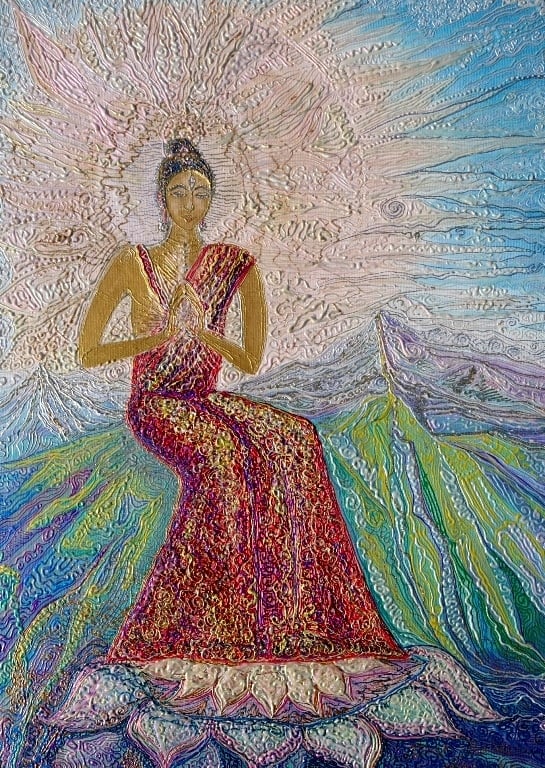
What we hold to be true, we experience as reality.
Our beliefs shape our experience of reality,
so the way we perceive the world — and ourselves within it.
As we move along our inner, vertical journey, the way we perceive and experience the world — and ourselves — is continually evolving.
Our deeply rooted views about reality and the self are constantly shifting and transforming.
However, this process involves a constant tension: while clinging to our views can block the expansion of our consciousness, we still need these perspectives to navigate the here and now.
How can this apparent contradiction be reconciled?
Finding the right answer is crucial because:
-
If we identify too closely with our current views, we may halt the rise of our consciousness, becoming prisoners of our own beliefs.
-
If we let go of our current views completely, we lose our ability to navigate the world—gradually slipping into helplessness, irresponsibility, or even nihilism.
The growth of wisdom lies in learning to handle this contradiction with increasing awareness and subtlety—both within our inner world and in our relationships.
What does WBV offer?
Reality lies beyond your views — recognize it, become aware of it, and allow this perspective to gently and softly permeate the underlying fabric through which your consciousness constructs reality in everyday life.
There is no absolute truth at the level of views — only a reality-creating process unfolding based on those views.
Through this process, you gradually become more open to experiencing the true nature of reality,
Who is WBV for?
The WBV learning space is for you if...
-
You take responsibility and are committed to making the cultivation of consciousness within you one of the central callings of your life.
-
You are ready to examine – and, if necessary, transform – your deepest beliefs and views, so they won’t limit but support you on your path.
-
You understand that part of this process is the continuous unfolding of what you call your “self”.
-
Your transformation is driven by the power of love and compassion.
-
You trust that this path leads toward deeper meaning, inner peace, and harmony.
-
You are committed to inviting others — humans and all sentient beings — in this direction through the way you live and act.
You won’t find ready-made answers here.
But you will find frameworks that help open the gate to that inner space where the answers are already quietly alive within you.
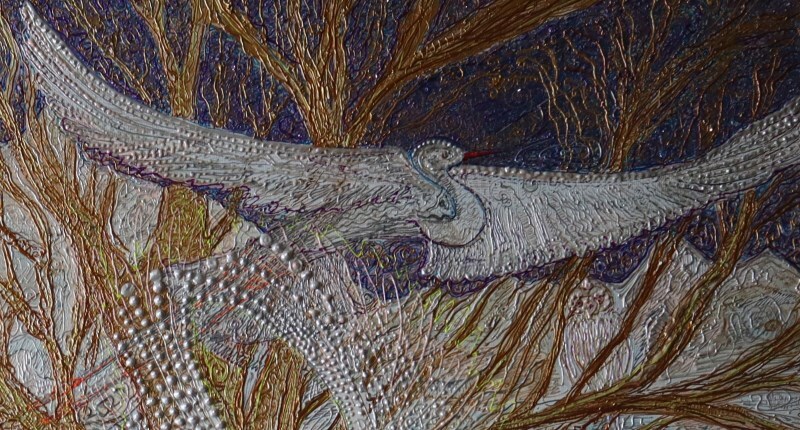
"The stronger our ignorance and bias, the more limited our mind’s capacity becomes, as if we were to bind our nature within chains. To free ourselves from these constraints, we must cut through all forms of ignorance and bias, for only then will the innate purity of our nature be able to manifest fully.
Simply removing the obstacles, however, is not enough; we must also develop the conditions to ensure they do not return. This is done by completely habituating our minds to the wisdom that realises the sublime emptiness of reality and the non-referential compassion that encompasses all things.
These two aspects of wisdom and compassion function like the two wings of a bird.
Together, they allow us to soar high above our limitations and establish the conditions for Buddhahood.
As the great Kadam master Atisha Dipamkara often said, 'Wisdom without method is bondage. Method without wisdom is bondage.' Neither of these qualities is sufficient in isolation. Without the method of love and compassion, there is no room in our lives for change, as our focus is simply too narrow for wisdom to be effective. Conversely, without wisdom, our love and compassion remain superficial and limited. We need both of these qualities if we are to be successful."
Khentrul Jamphel Lodrö Rinpoche
The Structure of WBV
What does this group-based learning experience involve?
We build upon what was learned in CCT
In CCT, we experienced the transformative power of the combination of compassion and loving-kindness, along with the mindset that supports them. WBV is, in this sense, a continuation of CCT — it introduces a Buddhist-inspired understanding of wisdom, which can then be followed by the development of personal insight-based wisdom.
As Fred Kofman puts it:
„Wisdom without compassion is ruthlessness, and compassion without wisdom is folly.”
Based on the framework of CCT, we continue as follows:
- A 12-week program
- Weekly 2-hour group sessions – including knowledge-sharing, group practices, individual and collective reflections
- Daily meditation practices
- Napi meditációs gyakorlatok
- Every day exercises to help us practice wisdom concerning our views
Would you like to begin WBV grounded in the experiential foundations of CCT?
If you haven’t participated in the CCT course yet, you can:
-
Join the intensive CCT course starting in September 2025, which will guide you through the practice of engaged compassion over four Friday afternoons, beginning on September 12.
-
The course will conclude before the start of WBV, allowing you to experience the transformative power of CCT — and begin the WBV journey grounded in this experience.
-
You can read more about the upcoming 2025 Compassion Dynamics programs and how they build on each other.
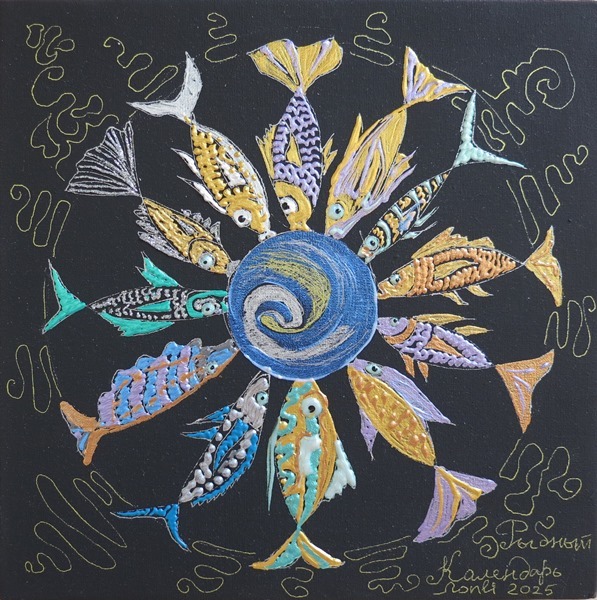
What happens during the 12 weeks?
The milestones of the WBV journey
Through the lens of Buddhist psychology, we step into cultivating insight-based wisdom:
Week 1: Agreement; I am right and I am not: The Relative TruthWeek 2: My truth and the truth of all: The Three Truths — relative, conventional, and absolute
Week 3: There is no truth, just a process of creating reality
Week 4: Levels of adult mental development: socialised, self-directed, and self-transforming consciousness
Week 5: Tribe – ego – eco: Levels of consciousness along the axes of wisdom and compassion
Week 6: The Ladder of Inference as a wisdom-extending intervention tool
Week 7: The path of wisdom: cultivating a flexible mind – the essence of the Rimé philosophy
Week 8: Introduction to Vipassana 1 – questioning the illusion of the self
Week 9: Introduction to Vipassana 2 – questioning the view of the inherent existence of phenomena
Week 10: Introduction to Vipassana 3 – questioning the views of permanence and linear time
Week 11: Introduction to Vipassana 4 – questioning the pursuit of happiness solely in external reality could be free from suffering
Week 12: Integrating the insights of WBV into everyday life
Buddhist roots
Toward the Freedom Beyond Views
„When we look at the ocean, we see that each wave has a beginning and an end. A wave can be compared with other waves, and we can call it more or less beautiful, higher or lower, longer-lasting or less-long lasting. But if we look more deeply, we see that a wave is made of water. While living the life of a wave, it also lives the life of water. It would be sad if the wave did not know that it is water. It would think, “Someday, I will have to die. This period of time is my life span, and when I arrive at the shore, I will return to nonbeing.” These notions will cause the wave fear and anguish. We have to help it remove the notions of self, person, living being, and lifespan if we want the wave to be free and happy.
A wave can be recognized by signs—high or low, beginning or ending, beautiful or ugly. But in the world of the water, there are no signs. In the world of relative truth, the wave feels happy as she swells, and she feels sad when she falls. She may think, “I am high,” or “I am low,” and develop a superiority or inferiority complex. But when the wave touches her true nature—which is water—all her complexes will cease, and she will transcend birth and death.
We become arrogant when things go well, and we are afraid of falling, or being low or inadequate. But these are relative ideas, and when they end, a feeling of completeness and satisfaction arises. Liberation is the ability to go from the world of signs to the world of true nature. We need the relative world of the wave, but we also need to touch the water, the ground of our being, to have real peace and joy [and this is what so many contemporary people lack]. We shouldn’t allow relative truth to imprison us and keep us from touching absolute truth. Looking deeply into relative truth, we penetrate the absolute. Relative and absolute truths inter-embrace. Both truths, relative and absolute, have a value."
Thich Nhat Hanh
What is the value of “relative” and “absolute” truth?
In Buddhism, relative and absolute truth are together referred to as the “two truths.”
The “two truths” — like every element of Buddhism — are not a philosophy or theological doctrine or revelation, but a mental tool that makes vertical ascent possible.
So how can we use this tool?
According to the teaching of the two truths, using the words of the above metaphor, our true nature corresponds to the experience of water — the peaceful, indestructible, knowing, and aware quality of consciousness that lies behind all forms or phenomena.
Water represents Life itself — omnipresent, all-pervading, eternally cyclical, constantly transforming from itself, unfolding into ever-changing forms.
The wave is the pulsation that appears on the surface of this ever-flowing, ever-moving water — the moment-to-moment manifestation of its energy in motion.
- When we identify ourselves with the wave, this is the experience of relative truth, the experience of inner reality.
- When we realise that we are the water, this is the experience of absolute truth, the experience of sacred reality.
Until we understand the concept of the two truths, it’s very easy to fall into the exclusive trap of our relative truth. This is when we cling strongly to our sense of self. We believe that the “I,” as an individual, exists absolutely independently, on its own. It’s like a drop of water saying, “I am the water.” Or like a single cell of a living organism saying, “I exist on my own,” and that the host body exists only to serve my needs.
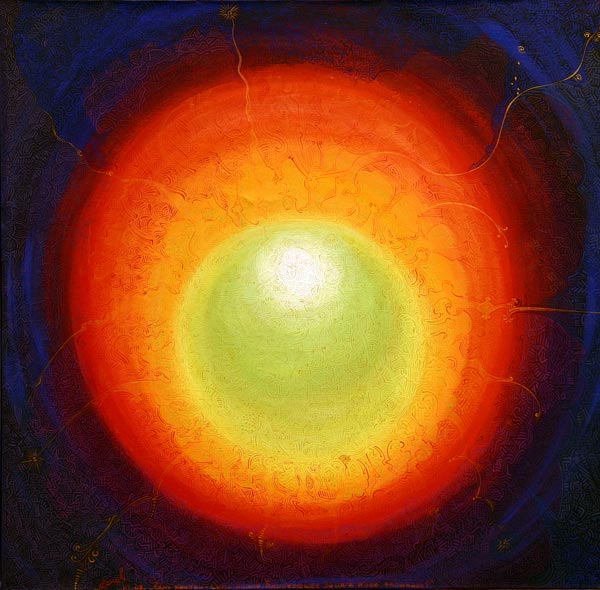
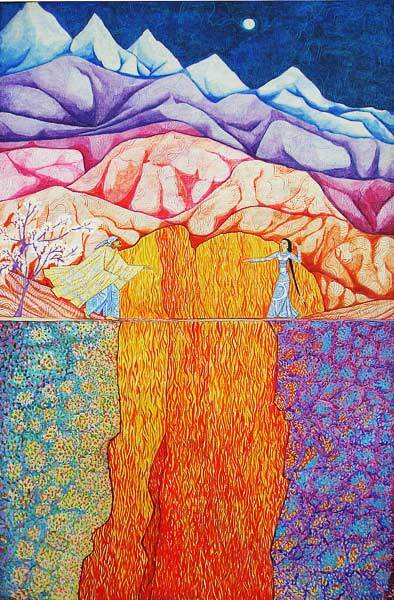
When we are trapped in the relative truth, we become disconnected from the whole. We fail to acknowledge that we are parts and manifestations of a greater whole beyond ourselves—an ineffable totality: life, consciousness. Because of this, we mutually project this “illusion of disconnection” onto each other, and thus we experience the world as a system of separate, independently existing parts in a state of collective spiritual blindness. With this fundamental assumption, we interpret the world: analyzing it, dissecting it, breaking it down into pieces. Then we try to reassemble these pieces based on what is useful to us. Meanwhile, we still do not perceive or recognise what the whole truly is, and so we feel lonely and vulnerable.
In this vulnerable, lonely state, we may recall the existence of the absolute truth, which can give us hope, faith, and guidance on how to “reprogram” ourselves through insight, decisions, and actions. Knowledge of the absolute truth points toward a direction where greater unity, peace, acceptance, and love prevail. Where there is an awareness of interdependence with our environment, and a goodness that acts beyond our individual self. The value of the absolute truth lies in indicating this direction and in the possibility of continuously transcending our relative truth in this direction.
However, devaluing relative truth and idealising absolute truth can also be the wrong path. This happens when we feel that our life on this earthly vale of tears is suffering and punishment—that things, our lives in the here and now, have no meaning. Heaven, paradise, and absolute reality is somewhere else, beyond here. And it is possible to escape to that other world, to flee our everyday life there. In this earthly world, it doesn’t matter what happens to us, because our fate is already written, others judge us, others decide instead of us, about us. “There’s little point in participating in all this.” We find happiness only temporarily, in “checking out”—when we flee into illusions. This can happen by immersing ourselves in parallel virtual realities or by using chemical mind-altering substances.
Forgetting about relative truth can also involve misinterpreting the spiritual path—for example, when yoga, meditation, or attending church is used as a temporary refreshment or a sedative, and after the “session,” we continue our seemingly meaningless everyday lives.
It may also happen that we experience absolute truth—that “All and Nothing are One”—but this experience arises only under extreme external conditions, risking our lives or isolated from everyday life, in a disintegrated, island-like manner.
The timing of WBV
The three-month shared journey
The WBV course starts in the fall of 2025, online via Zoom in Hungarian.
Course start date: October 7, 2025.
We will meet on Tuesday evenings from 6:00 PM to 8:00 PM.
Group session dates:
- October 7, 14, 21, 28
- November 4, 11, 18, 25
- December 2, 9, 16
- January 13
You can also find these dates on the Google calendar on the right.
The next WBV course is expected to begin in spring 2026.
You can read about Compassion Dynamics’ other 2025 courses and how they build on each other here.
The Course Fee
with compassionate pricing
Instead of prices, we think in terms of offerings. We have various offer levels so you can choose the one that best suits your financial situation. If the categories below do not fit your life situation and you need additional financial support to participate, please contact info@compassiondynamics.co.
No one will be turned away due to financial constraints.

Courses are organised for groups of between 6 and 18 people.
The proposed amount to be offered
600 EUR
This is the amount that reflects the average market price of courses with similar scope.
The reduced amount to be offered
350 EUR
If the amount of the proposed offering exceeds your current financial means, you can opt for this fee.
Compassion Dynamics sustainer
800 EUR
If you would like to practice generosity and help make the course accessible to those with fewer resources than you.
Interest in WBV
or other Compassion Dynamics courses